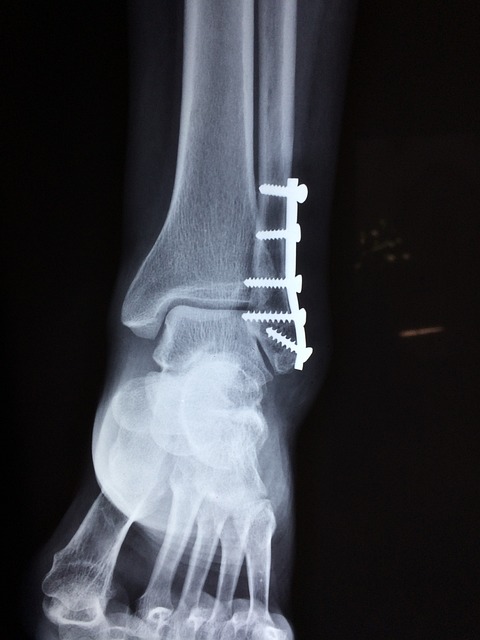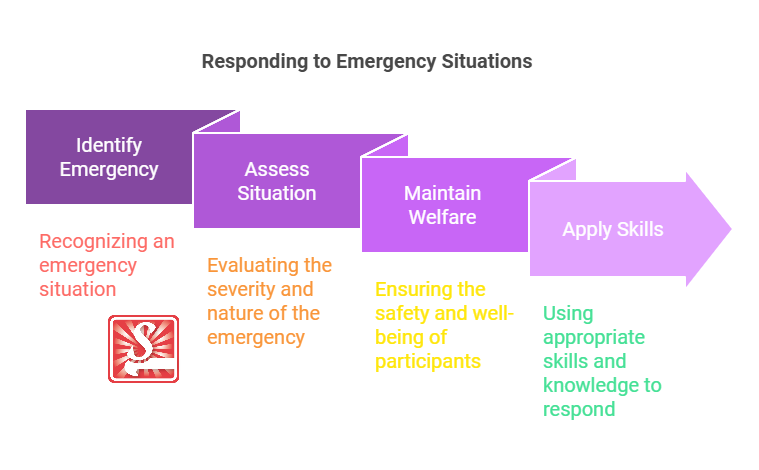Clear Instructions When Responding to Emergency Situations in Sport and Recreation
Posted by SkillMaker in Dec, 2024
What is a concise description of clear instructions when responding to emergency situations in Sport and Recreation?

Clear instructions when responding to emergency situations in Sport and Recreation involve the preparation and application of systematic measures to manage unexpected incidents promptly and safely. This includes identifying emergencies, informing relevant personnel, coordinating action plans, and providing immediate aid to ensure safety and mitigate damages.
Why do people in enterprises need clear instructions for responding to emergency situations in Sport and Recreation?
People in Sport and Recreation enterprises require clear instructions to respond effectively to emergencies because it ensures the safety and wellbeing of participants, staff, and the public. Well-defined procedures help to minimise confusion, reduce response times, and improve the effectiveness of emergency management, providing a safer environment for everyone involved.
“Having clear instructions in emergencies transforms chaos into order, ensuring swift, safe, and efficient management of the situation.”
What are the key components or elements of responding to emergency situations in Sport and Recreation?
Key components of responding to emergency situations in Sport and Recreation include:
- Emergency Action Plan (EAP): A clear plan outlining roles and responsibilities during an emergency.
- Risk Assessment: Identifying potential hazards and mitigating risks.
- Communication Protocol: Clear lines of communication to notify all parties involved.
- First Aid Preparedness: Ensuring the availability of trained personnel and equipment.
- Evacuation Procedures: Clearly marked exits and procedures for safe evacuation.
What key terms relate to responding to emergency situations in Sport and Recreation?

Registered Trademark®
- Emergency Response Plan (ERP): A structured approach detailing processes and responsibilities in an emergency.
- Incident Commander: The person responsible for coordinating the response efforts.
- Safety Officer: An individual tasked with maintaining safety during an emergency situation.
- First Responder: The first person to arrive and triage the situation.
- CPR (Cardiopulmonary Resuscitation): A lifesaving technique critical in cardiac arrest emergencies.
Who is typically engaged with operating or implementing emergency response procedures in Sport and Recreation?
Roles commonly involved in operating or implementing emergency response procedures in Sport and Recreation include safety officers, coaches, lifeguards, event managers, and trained first aid personnel. These individuals are crucial in delivering a timely and effective response to emergencies.
How does emergency response integrate with other components of Sport and Recreation?

Emergency response procedures integrate with various components of Sport and Recreation by underpinning safety practices and fostering a culture of preparedness. They work in conjunction with risk management strategies, facility management, and participant welfare initiatives to ensure a comprehensive safety net in recreational environments.
Where can the student go to find out more information about responding to emergency situations?
- Sport Australia – Providing guidance on safety in sport
- Australian Sports Commission – Insights on injury prevention and management
- Australian Red Cross – First aid and emergency response training
What job roles would be knowledgeable about emergency response in Sport and Recreation?
Roles include:
- Safety Officers
- Event Managers
- Coaches and Fitness Instructors
- Lifeguards
- First Aid Officers
What is emergency response like in relation to sports, family, or schools?

In sports, emergency response is akin to strategic play planning where every team member knows their role during a game-changing moment. In a family context, it’s similar to having a well-rehearsed fire drill that everyone in the household knows and can execute. For schools, it reflects organised evacuation procedures and regular drills ensuring that students and staff can react swiftly and safely in any emergency scenario.
(The first edition of this post was generated by AI to provide affordable education and insights to a learner-hungry world. The author will edit, endorse, and update it with additional rich learning content.)


 Post Tagged with
Post Tagged with